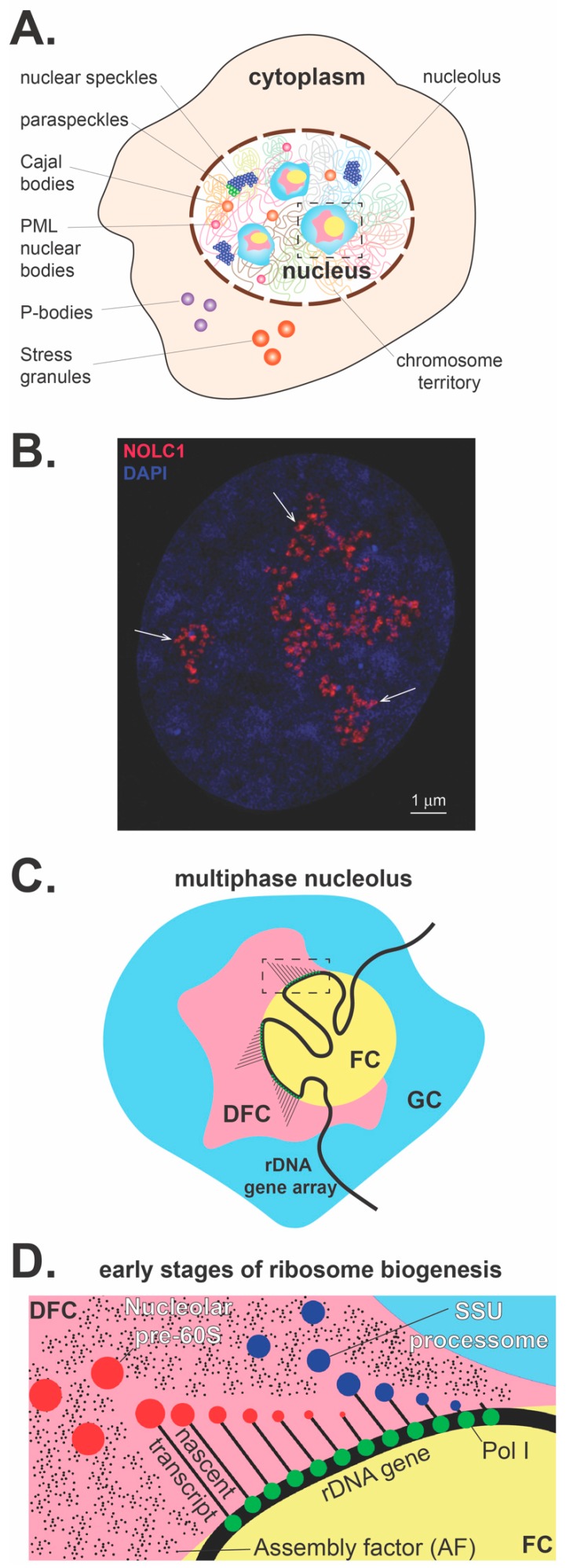Figure 1.
The nucleolus overview. (A) Within the cell there are a myriad of membrane-less subcompartments that include cytoplasmic processing bodies and stress granules. Within the nucleus, numerous subcompartments that include the most prominent membrane-less organelle, the nucleolus, nuclear speckles, paraspeckles, Cajal bodies, and PML nuclear bodies. (B) Nucleolar pre-rRNA processing sites visualized in a human U2OS cell. NOLC1, a nucleolar chaperone interacting with box C/D and box H/ACA small nucleolar ribonucleoproteins (snoRNPs), is detected by a specific antibody, co-stained with DAPI, and visualized by structured illumination microscopy. This nucleolar factor is primarily localized in regions of early pre-rRNA processing events, which correspond to the phase-separated subnucleolar phase corresponding to previously characterized dense fibrillar components (arrows, size bar 1 micron). (C) The enlarged nucleolus with three nucleolar subcompartments is depicted. The multiphase nucleolus is organized around rDNA gene arrays, which are anchored in the fibrillar centers (FCs). Transcriptionally active rDNA genes are located at the fibrillar center/dense fibrillar component (FC/DFC) interface. Nascent pre-rRNA transcripts are entering DFCs, where they undergo a series of processing, modification, and folding steps. Later, pre-rRNA processing and assembly steps of pre-ribosomal particles occur in the granular component at the periphery of the nucleolus (GC). (D) A detailed representation of the inset in panel C diagrams the co-transcriptional assembly with AFs and processing that releases the nucleolar assembled SSU processome and the LSU pre-ribosome within the DFC.

